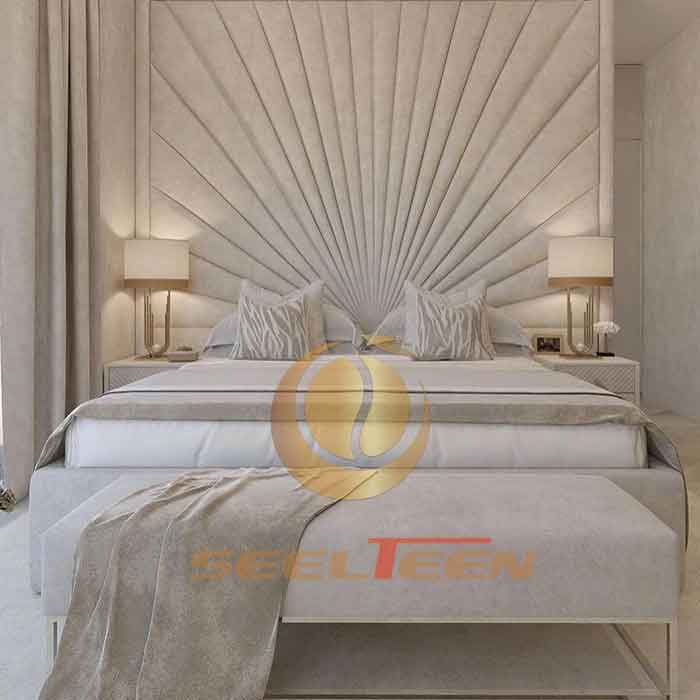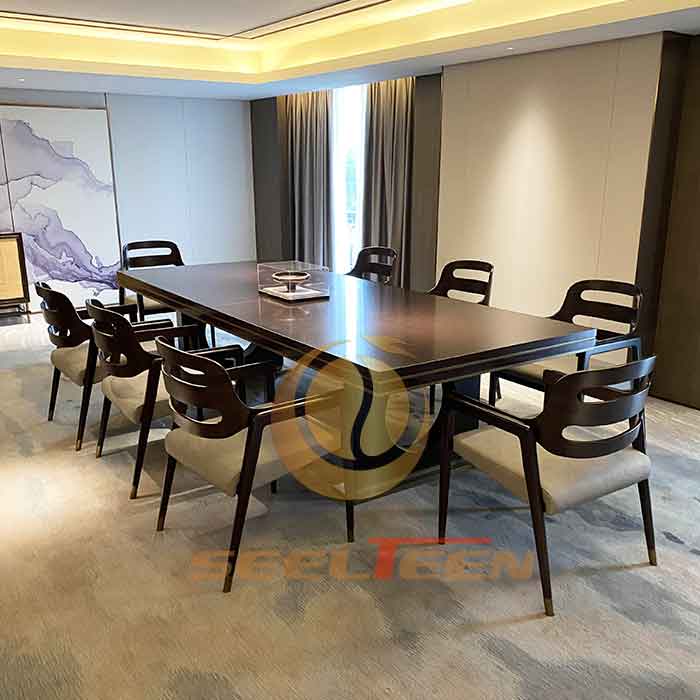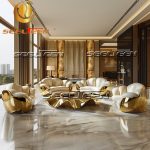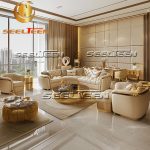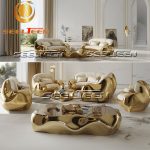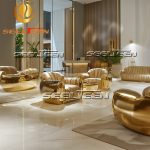The classical beauty revived in modern décor

The modern world that we live in today values efficiency, technology and simplicity; at the same time, it is also grounded on the classical ideals of ancient Greco-Roman civilizations. Our current perception of the contemporary aesthetic is, in fact, inspired by creations such as the graceful Venus de Milo and the Italian city of Herculaneum. What we currently denominate ‘modern-classic’ is, therefore, the outcome of the rebirth of ancient wisdom and concepts that made their return during the Renaissance, the Victorian Era and again in the Art Deco style. Recent years have added another twist to the early classical arrangements and adapted them to contemporary standards.
Proportion
Balance and symmetry are essential factors that define the modern-classic trend. Ancient Greek sculptors yearned to achieve harmony between beauty and geometry through organic proportion that produced alluring and extremely realistic works of art. A similar system applies to interior décor in which a room’s objects are arranged in pairs to create a notion of balance and at the same time brightness is introduced to create the illusion of larger spaces. As an example, Renaissance villas and palaces often emphasize symmetry and boast high ceilings that endow space with grandiosity. The same can apply to contemporary homes and professional spaces.
Furnishing
Furniture is the key element to making a lasting statement and in the case of the classic-modern style, this message is constructed through minimalism and elegance. While most pieces are selected for their simplicity, the main element that sets them apart is the quality of their materials and the depth of their color. Wood, porcelain and glass are staples of modern-classic décor, especially when arranged alongside contrasting colors from a range of grays, silver, white, black and dark blue shades. The high-contrast combination serves to highlight the individuality of your chosen furniture pieces and to break away from neutrality by choosing instead a bold modern move.
The decorative element
Modern-classic décor welcomes the symbiosis between homogeneity and experimental approaches. This is particularly evident in the design of neutral flooring- generally covered in wood or with a luxurious carpet– which sets the stage where unique objects can highlight the aspects of texture and personality. A decorative touch can be applied to large surfaces such as wallpapers with floral motifs or golden finishes, and curtains made with heavy fabrics like velvet and brocade that match the room’s carpets. Other stately decorations consist of captivating chandeliers, extravagant mirrors and delicate lamps. Among these displays of modern grandeur, there should be at least one reference to the classic interest in nature and its relationship with humans. This natural aspect can be introduced with lavish houseplants, flower vases or floral paintings that remind us of the perfection that is also present in nature.
In conclusion, we can say that the Renaissance left behind a legacy of classical design that can be found in our pursuit of symmetry, proportionality, beauty, and individuality. The contemporary response to this centuries-old movement has been to merge it with the modern orientations towards simplicity and efficiency.
Welcome to contact us to get the latest price list!
Do you need to read another article? Please click on this: King-size bed dimensions
Find us on Facebook, Instagram and don’t miss a single breath

